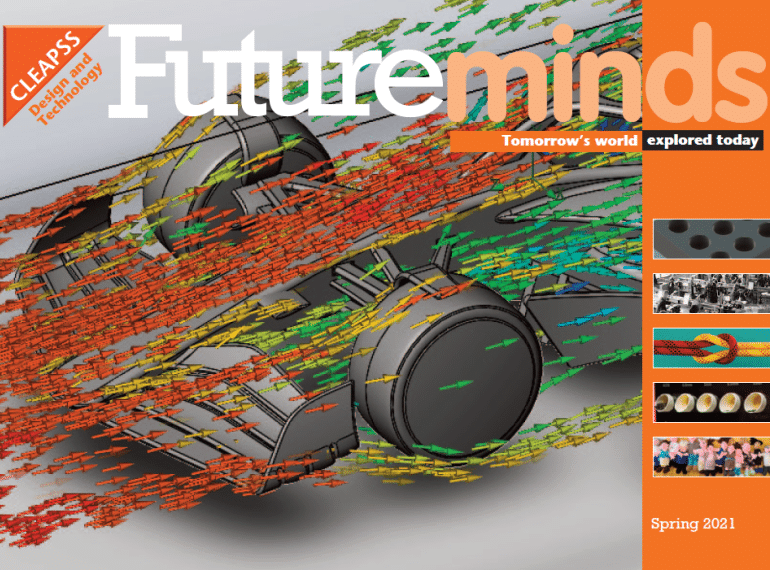
With this weekend’s Bahrain Grand Prix due to launch the new Formula 1 season, members of QE’s pupil-run Year 12 Engineering Society have been making front-page news with their own exploration of the hi-tech sport.
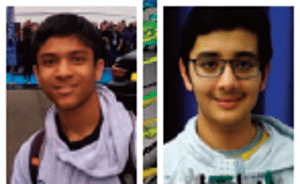 The Sixth Form engineers looked into how CFD (computational fluid dynamics) can be used to create a virtual wind tunnel for an F1 car design. And an article about their work penned by the society’s leaders, Nirmay Jadhav and Ansh Jaiswal, features prominently in the current edition of Futureminds, the magazine produced by CLEAPPS*, a national science and technology education advisory service. In the article, Nirmay and Ansh explain why they established the society, the activities they have already held and what they aim to do in the future.
The Sixth Form engineers looked into how CFD (computational fluid dynamics) can be used to create a virtual wind tunnel for an F1 car design. And an article about their work penned by the society’s leaders, Nirmay Jadhav and Ansh Jaiswal, features prominently in the current edition of Futureminds, the magazine produced by CLEAPPS*, a national science and technology education advisory service. In the article, Nirmay and Ansh explain why they established the society, the activities they have already held and what they aim to do in the future.
Headmaster Neil Enright said: “I congratulate Nirmay and Ansh. This is a good example of the student-led clubs and societies that are such a feature of life at QE. We find them an excellent way for boys to display initiative and develop skills such as teamwork, while providing enrichment for themselves and for their peers.”
The pair’s achievement was also praised by Head of Technology Michael Noonan: “It has been encouraging to see how they have applied their knowledge to solving real-world problems using new and emerging technologies.”
In the article, Ansh and Nirmay state that they launched the society with a threefold aim:
- To educate members about the different engineering disciplines
- To help those interested in applying for engineering courses at university
- To pursue their own engineering interests and help others to do so, too.
One key meeting of the society looked at mechanical engineering, with members discussing why it is among the most popular fields in engineering. “To build upon this overview, we hope to incorporate some practical mechanical engineering with small challenges that can be worked upon weekly as a taster for the career of a mechanical engineer,” said Ansh.
In other sessions, members worked together to solve questions from Cambridge University’s Engineering Admissions Assessments (ENGAA). “This helped us get to grips with the principles and gave us all some preparation in advance,” Nirmay said.
But the undoubted highlights so far have been Computer-Aided Design (CAD) sessions, he said. “We went through the basics of how to design and develop models in 3D workspaces with Solidworks (our software of choice).” In the second week of these sessions, the society members focused on the simulations that can be carried out using Solidworks, including both the CFD simulation used to create the virtual wind tunnel and also FEA (Finite Element Analysis), which can be used to collect data about the performance of a 3D model. To explore FEA, the boys tested a load on a prism.
Ansh and Nirmay have plans to run further extra-curricular activities or competitions involving “the practical, hands-on aspects of engineering that we all enjoy”, while also boosting their skills and their appeal to employers and universities.
Besides Ansh and Nirmay, the society’s members are: Amudhu Anandarajah, Varun Vijay Kumar, Aiden Smith, Medushan Thevadaran and Alex Woodcock.
* CLEAPSS (Consortium of Local Education Authorities for the Provision of Science Services) is an advisory service providing support in science and technology to local councils and schools.
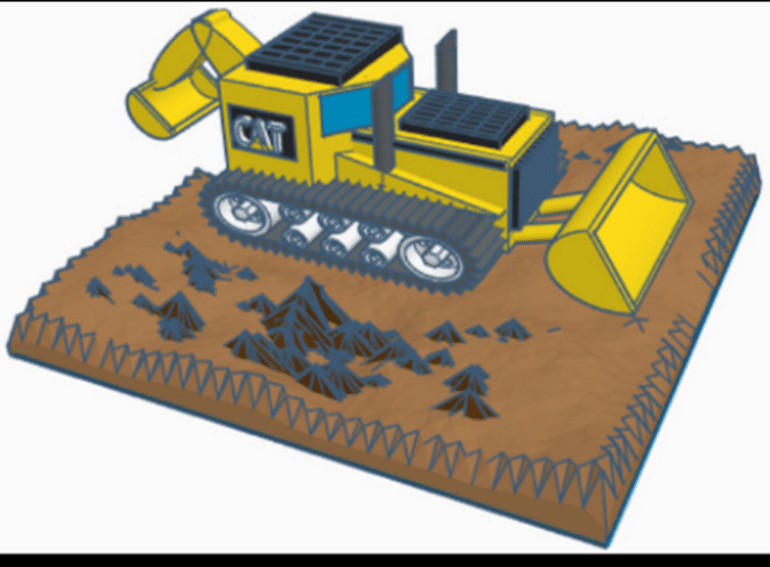
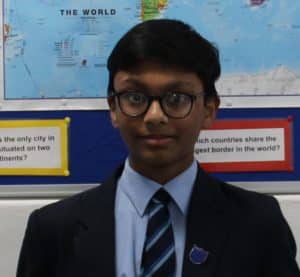 Judges in the Polar Cloud CAT Inc. Design Challenge congratulated him for combining creativity with practicality in his design, and he also won appreciation from other users of American manufacturer Polar 3D’s Polar Cloud online 3D design platform.
Judges in the Polar Cloud CAT Inc. Design Challenge congratulated him for combining creativity with practicality in his design, and he also won appreciation from other users of American manufacturer Polar 3D’s Polar Cloud online 3D design platform.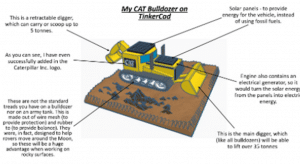 “Firstly, at the back, there is a retractable claw which is able to lift five tonnes. This was created as a feature to utilise when carrying more rubble or dirt. The treads for the vehicle are intended to be made out of wire mesh and rubber to ensure balance and protection, which is a necessity for users who require some means of transportation in more secluded regions.”
“Firstly, at the back, there is a retractable claw which is able to lift five tonnes. This was created as a feature to utilise when carrying more rubble or dirt. The treads for the vehicle are intended to be made out of wire mesh and rubber to ensure balance and protection, which is a necessity for users who require some means of transportation in more secluded regions.”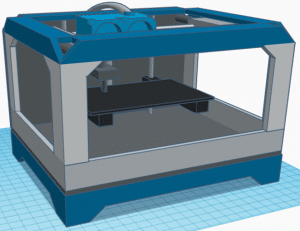 Judges stipulated that entries should not only fulfil criteria such as printability, design execution and creativity, but also prioritised those, such as Keon’s, which garnered higher numbers of ‘likes’ on the online platform.
Judges stipulated that entries should not only fulfil criteria such as printability, design execution and creativity, but also prioritised those, such as Keon’s, which garnered higher numbers of ‘likes’ on the online platform.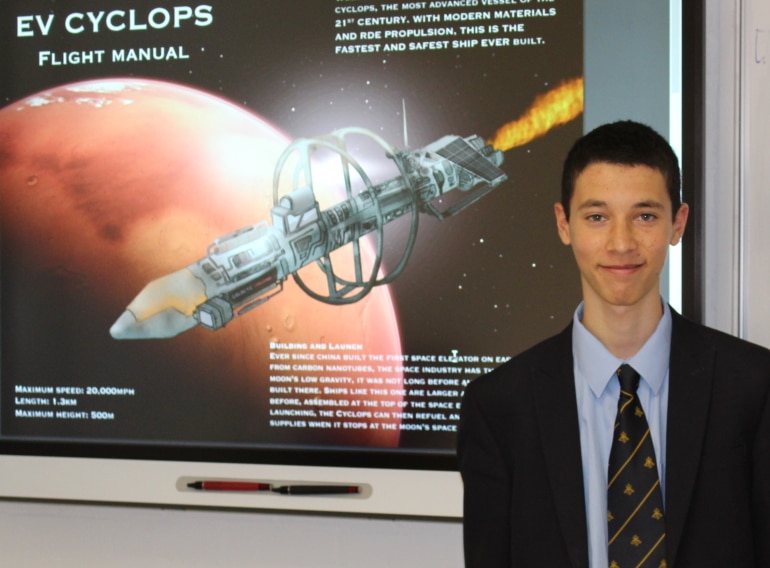
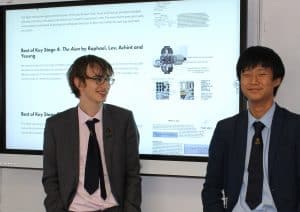 Lev Shafran, Achint Thakkar and Ye-Sung Baek, who are now in Year 12, collectively won the Best of Key Stage 4 Award in the second stage of the
Lev Shafran, Achint Thakkar and Ye-Sung Baek, who are now in Year 12, collectively won the Best of Key Stage 4 Award in the second stage of the 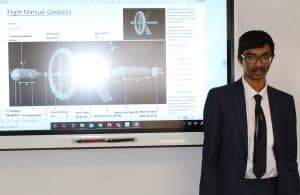 Chair of the Galactic Challenge Aadil Kara, who is also an Old Elizabethan (OE 2010–2017), explained that when Covid-19 forced the cancellation of in-person events, including one due to be held at QE, the organisation had instead launched the digital competition to allow participants to enter from home.
Chair of the Galactic Challenge Aadil Kara, who is also an Old Elizabethan (OE 2010–2017), explained that when Covid-19 forced the cancellation of in-person events, including one due to be held at QE, the organisation had instead launched the digital competition to allow participants to enter from home.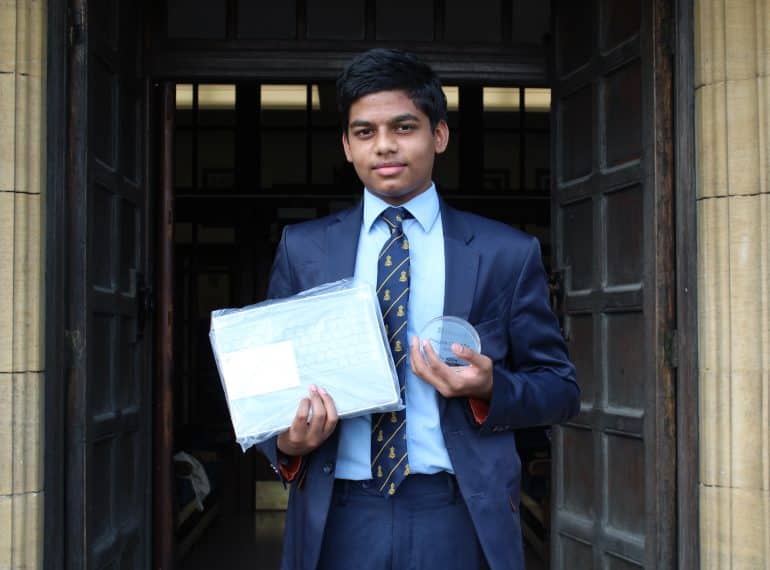
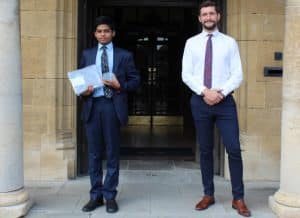 Congratulating him, QE’s Head of Technology Michael Noonan said: “Ashwin is an outstanding Technology student who has had a tremendous year. Despite the challenges of the school closure, or perhaps even taking advantage of them, he threw himself into many competitions using his vast technological experience. He was successful in eight competitions on a local, national and, with his latest win, international level. He should be extremely proud of his achievements this year, and he undoubtedly has a bright future ahead of him!”
Congratulating him, QE’s Head of Technology Michael Noonan said: “Ashwin is an outstanding Technology student who has had a tremendous year. Despite the challenges of the school closure, or perhaps even taking advantage of them, he threw himself into many competitions using his vast technological experience. He was successful in eight competitions on a local, national and, with his latest win, international level. He should be extremely proud of his achievements this year, and he undoubtedly has a bright future ahead of him!”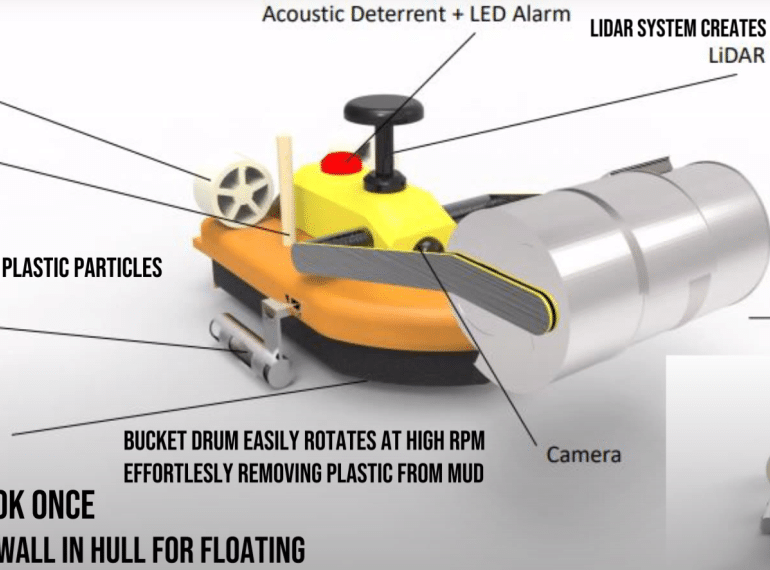
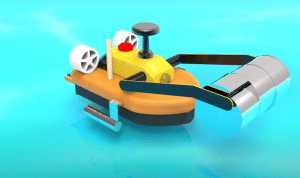 The Prata Neptunia team combined their skills in Technology, Mathematics and Chemistry and also produced a slick video presentation to promote their design for an autonomous hovercraft robot.
The Prata Neptunia team combined their skills in Technology, Mathematics and Chemistry and also produced a slick video presentation to promote their design for an autonomous hovercraft robot. The team learned project-management skills in order to optimise their time effectively, from the use of Gantt charts to task delegation. They designed prototypes at home, building and testing parts, and investigating processes to remove microplastics in order to determine the feasibility of their design.
The team learned project-management skills in order to optimise their time effectively, from the use of Gantt charts to task delegation. They designed prototypes at home, building and testing parts, and investigating processes to remove microplastics in order to determine the feasibility of their design.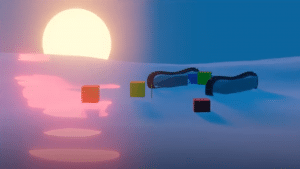 The Ocean team, Jashwanth Parimi, Utkarsh Bhamidimarri and Siddarth Jana, also started their project relatively late and had only about a month to complete it.
The Ocean team, Jashwanth Parimi, Utkarsh Bhamidimarri and Siddarth Jana, also started their project relatively late and had only about a month to complete it.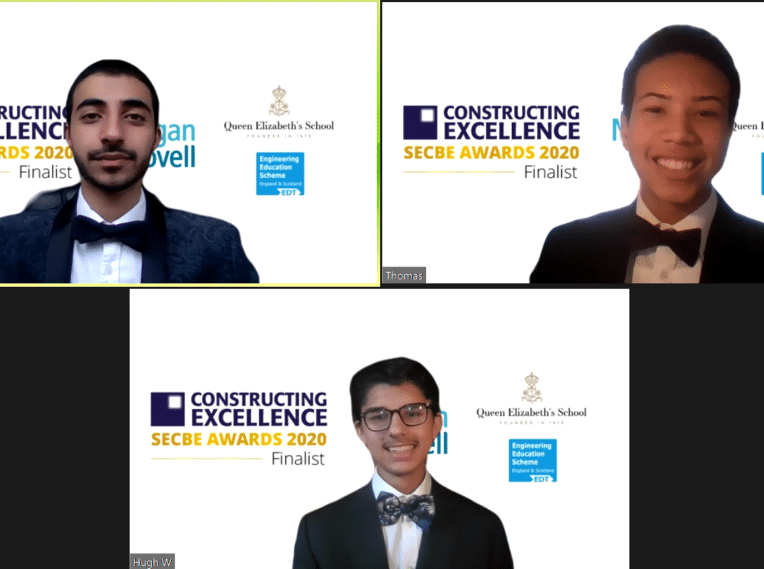
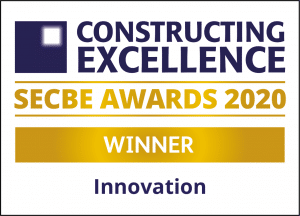 Competing against entries from leading professional construction firms, QE’s four-strong Engineering Education Scheme team were rewarded by the judges for the strength of their design project aimed at reducing the risk of injury from band saws.
Competing against entries from leading professional construction firms, QE’s four-strong Engineering Education Scheme team were rewarded by the judges for the strength of their design project aimed at reducing the risk of injury from band saws.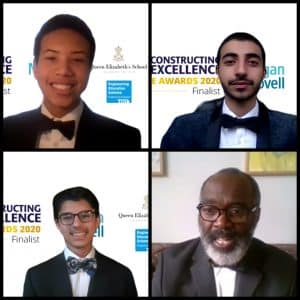 The team worked with office design specialists Morgan Lovell on the project, which involved a number of suggested improvements to band saw guards and dust extraction systems. Tweeting their “huge congratulations” to the QE four, Morgan Lovell said: “We’re really proud to be alongside the engineering minds of the future”.
The team worked with office design specialists Morgan Lovell on the project, which involved a number of suggested improvements to band saw guards and dust extraction systems. Tweeting their “huge congratulations” to the QE four, Morgan Lovell said: “We’re really proud to be alongside the engineering minds of the future”.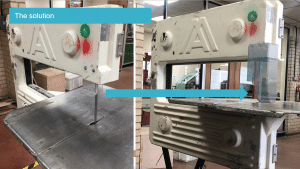 An additional benefit of the designs was that they incorporated significant improvements to the existing dust extraction systems of saws, thus reducing dust exposure – another health & safety concern – and allowing a more precise cut to be made because of the enhanced visibility of the cutting service.
An additional benefit of the designs was that they incorporated significant improvements to the existing dust extraction systems of saws, thus reducing dust exposure – another health & safety concern – and allowing a more precise cut to be made because of the enhanced visibility of the cutting service.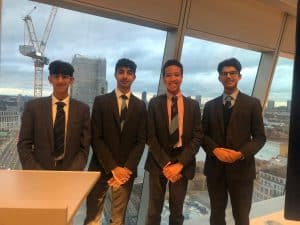 Team leader Thomas opened the team’s presentation to the judges at the virtual awards ceremony, before Hugh and Kai went through it in more detail. They faced some tough questioning from the judging panel, which comprised Chris Blythe (Chairman of SECBE, a construction industry not-for-profit company working towards positive change in the sector), Bill Ferris OBE (Chief Executive of Chatham Historic Dockyard Trust), James Wright (Framework Manager for Southern Construction Framework) and Julie Barry (Head of Business Development for RIFT R&D).
Team leader Thomas opened the team’s presentation to the judges at the virtual awards ceremony, before Hugh and Kai went through it in more detail. They faced some tough questioning from the judging panel, which comprised Chris Blythe (Chairman of SECBE, a construction industry not-for-profit company working towards positive change in the sector), Bill Ferris OBE (Chief Executive of Chatham Historic Dockyard Trust), James Wright (Framework Manager for Southern Construction Framework) and Julie Barry (Head of Business Development for RIFT R&D).